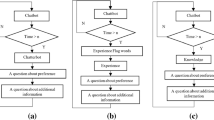Abstract
Researchers are trying to construct an intelligent system with the help of advance in technology. Many successful milestones have been passed in achieving “humanoid robots” that are little closer to humans, but still not very good. Although the expectation level for the intelligence of these new systems is still unknown, it can be fairly assumed that reaching a goal at least up to the intelligence level of a human being may be a big success. In order to be closer to a human, it is necessary to analyze the behavioral patterns of humans in order to apply those to other artificial intelligence machines. Humans can be described as creatures of emotion. They have feelings toward themselves as well as towards others. These affect all the dealings they perform. Is there anything these feelings can do to robots? Will there be any improvements to robot by having them? This research project discusses the possibility of applying “feelings” to mobile robots in ubiquitous environments.
Similar content being viewed by others
Explore related subjects
Discover the latest articles, news and stories from top researchers in related subjects.References
Simmons R, Goodwin R, Haigh KZ, et al. (1997) A layered architecture for office delivery robots. in Proc Auton Agents 245–252
Y Nakauchi R Simmons (2002) ArticleTitleA social behavioral robot that stands in line Auton Robots 12 313–324 Occurrence Handle10.1023/A:1015273816637
R Sack (1986) Human territory Cambridge University Press Cambridge
M Malmberg (1980) Human territoriality: survey of behavioural territories in man, with preliminary analysis and discussion of meaning Mouton Berlin
B Graf M Hans RD Schraft (2004) ArticleTitleCare-O-bot II: development of a next generation robotic home assistant Auton Robots 16 193–205 Occurrence Handle10.1023/B:AURO.0000016865.35796.e9
Schulz D, Burgard W, Fox D, et al. (2000) Web interface for mobile robots in public places. Proceedings of the IEEE International Conference on Robotics and Automation, March 2000, pp 48–56
G Lawitzky (2000) ArticleTitleA navigation system for cleaning robots Auton Robots 9 255–260 Occurrence Handle10.1023/A:1008910917742
Lamine MSB, Shibata S, Tanaka K, et al. (1997) Mechanical impedance characteristics of robots for coexistence with humans. Proceedings of the IEEE International Conference on Robotics and Automation, 1:907–912
H Ishiguro M Imai T Maeda et al. (2001) ArticleTitleRobovie: an interactive humanoid robot Int J Ind Robots 28 498–503 Occurrence Handle10.1108/01439910110410051
Kanda T, Sato R, Saiwaki N, et al. (2004) Friendly social robot that understands humans friendly relationships. Proceedings of the International Conference on Intelligent Robots and Systems (IROS2004), pp 2215–2222
M Fujita (2001) ArticleTitleAIBO: toward the era of digital creatures Int J Robotics Res 20 781–794 Occurrence Handle10.1177/02783640122068092
JT Butler A Agah (2001) ArticleTitlePsychological effects of behavior patterns of a mobile personal robot Auton Robots 10 185–202 Occurrence Handle10.1023/A:1008986004181
Nakata T, Sato T, Mori T (1998) Expression of emotion and intention by robot body movement. Proceedings of the Conference on International Autonomous Systems, 5 (IAS-5), June 1998, pp 352–359
T Fong I Nourbakhsh K Dautenhahn (2003) ArticleTitleA survey of socially interactive robots J Robotics Auton Syst 42 143–166 Occurrence Handle10.1016/S0921-8890(02)00372-X
Althaus P, Ishiguro H, Kanda T, et al. (2004) Navigation for human–robot interaction tasks. Proceedings of the IEEE Inter-national Conference on Robotics and Automation, pp 1894–1900
Yoda M, Shiota Y (1997) The mobile robot which passes a man. Proceedings of the 6th IEEE International Workshop on Robot and Human Communication, October pp 112–117
S Shibata H Inooka (1998) ArticleTitlePsychological evaluations of robot motions Int J Ind Ergonomics 21 483–494 Occurrence Handle10.1016/S0169-8141(97)00004-8
Yoda M, Shiota Y (1996) Analysis of human avoidance motion for application to robot. Proceedings of the 5th IEEE International Workshop on Robot and Human Communication, November 1996, pp 65–70
Kanade T, Tian Y, Cohn JF (2000) Comprehensive database for facial expression analysis. Proceedings of the 4th IEEE International Conference on Automatic Face and Gesture Recognition 46–53
T Gilovich (1981) ArticleTitleSeeing the past in the present: the effects of associations to familiar events on judgments and decisions. J Personality Soc Psychol 40 797–808
Goel A (1989) Integration of case-based reasoning and model-based reasoning for adaptive design problem solving. PhD thesis, Department of Computer and Information Science, Ohio State University
D Driankov H Hellendoorn M Reinfrank (1993) An introduction to fuzzy control Springer New York Occurrence Handle0789.93088
Author information
Authors and Affiliations
Corresponding author
Additional information
This work was presented in part at the 11th International Symposium on Artificial Life and Robotics, Oita, Japan, January 23–25, 2006
About this article
Cite this article
Balasuriya, J., Marasinghe, C., Watanabe, K. et al. Kansei and human experience analysis for mobile robot navigation in a ubiquitous environment. Artif Life Robotics 11, 105–111 (2007). https://doi.org/10.1007/s10015-006-0410-z
Received:
Accepted:
Published:
Issue Date:
DOI: https://doi.org/10.1007/s10015-006-0410-z




